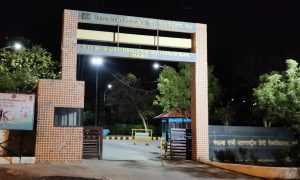It was in 1986 that the Rajiv Gandhi government signed a deal for about 410 155 mm Bofors gun with Sweden. The deal was worth over Rs. 1,400 crore. Unfortunately, the deal became infamous for the touted kickbacks of Rs. 60 crore that a variety of people received including some defence personnel. This was revealed by the Swedish Radio on April 16, 1987
From 1986 to 2017, the Indian Army didn’t get a single piece of artillery. This could’ve been because the Congress government feared that another deal would mean another controversy, so why not simply avoid defence purchases altogether. To save its own skin repeated Congress governments overlooked the desperate needs of the Indian Army. Whether it be a war with Pakistan in Kashmir or one with China in the mountainous terrains of the North East, artillery is a war-winning asset for India as proven in the Kargil War. Despite the artillery’s unmatchable importance, repeated governments ignored it as if India had made eternal peace with its neighbours and didn’t need more weapons.
However, times do change. And no matter how lengthy bad times may seem, eventually, better times do arrive at the doorstep.
With the Narendra Modi government coming to power, modernisation needs of the army again became a priority. Field guns in particular have been given significant emphasis.
M777
In 2017, the government struck a deal with the US for 145 M777 ultra light howitzers for almost Rs. 5,000 crore. The deal established 25 guns to be delivered in fly-away condition and the rest to be assembled in India. The 155 mm, 39-calibre guns have a range of 30 km that can be increased with superior ammunition. It is said to fire 5 rounds in 2 minutes. India received its first M777 howitzers in July 2018, and by March 2020 India will also get its first ‘Make In India’ M777 gun.
Why the M777 is crucial piece of equipment for the army is because it is light in weight and can be easily carried over land, air and sea. It can be quickly airlifted on a Boeing Chinook which the IAF is already inducting. This means that India can very quickly assimilate firepower on both its borders in case of a conflict.
Dhanush
In April 2019, the Indian Army took delivery of the first six of 114 indigenously designed and developed Dhanush 155-mm/45-caliber towed howitzers. It is the first long-range howitzer to be manufactured in India. The howitzer is said to have a maximum range of 38 km which is higher than that of the M777 and much more than Bofors (27 km). It is expected that by 2022 the army will get all 114 Dhanush guns.
K9 Vajra-T
In 2017, L&T won a Rs 4,500-crore contract from the government to manufacture 100 K9 Vajra-T 155 mm/52 calibre tracked self-propelled gun systems. The K9 Vajra-T is a variant of K9 Thunder which currently serves as one of the main conventional deterrent forces for a number of armies including the Korean Army.
The lethal weapon can provide deep fire support with its longer firing range, and due to its high rate of fire and accuracy it can give qualitative superiority to overcome numerical inferiority.
It is expected that by the first half of 2021 the Indian Army will get full delivery of 100 units.
India had to make-do with 410 Bofors guns for 30 years – from 1987 to 2017 – as its primary deterrent against two enemies – one a fanatic who is always on the lookout for a chance to bleed India, the other a formidable enemy that is superior both technologically and numerically. If we compare, India will acquire around 359 modern artillery pieces in the space of just 5-6 years! It isn’t hard to imagine the massive boost in land strength that the army will witness due to this.
India’s artillery modernisation plan calls for the need of 814 mounted guns, 1,580 towed guns, 100 tracked self-propelled guns (K9 Vajra-T), 180 wheeled self-propelled guns and 145 ultra light howitzers (M777) at a staggering cost of one lakh crore!






















 WhatsApp us
WhatsApp us